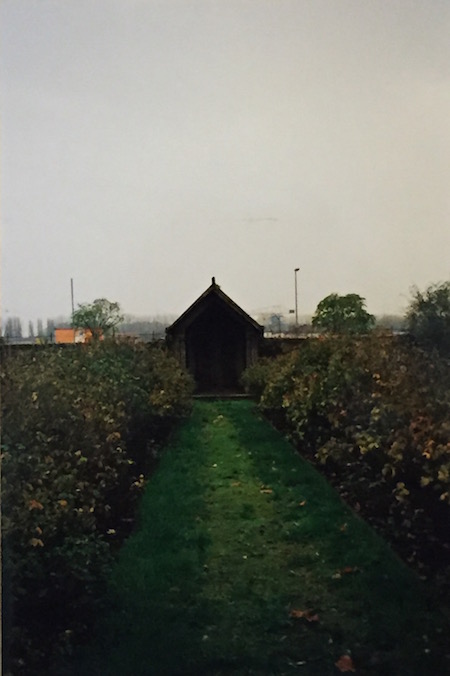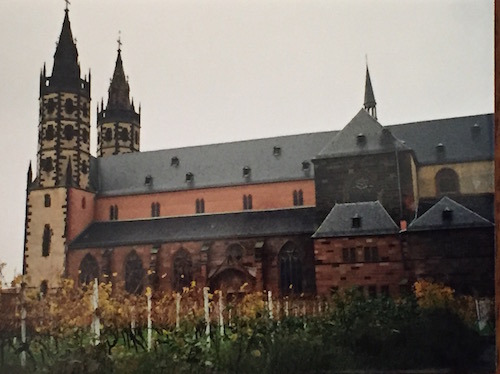
Last weekend we attended our neighborhood Oktoberfest celebration. It was a great evening filled with friends, German beer, some bratwurst, and a toe-tapping German band.
While enjoying the beer and sausage, I reminisced about my time spent in Germany for business, noting the beauty of the country, the friendly people, the great food, beer, and the wine. Yes, the wine.
It was during a 1998 trip to Germany when I became acquainted with German wine, specifically the Rieslings of the Rheingau wine region. The Rheingau is one of the smaller wine growing regions in German, and more than 80% of the area is planted with Riesling.
My one-day wine tour took me from Hochheim and Weingut Franz Kunstler, to Worms where I visited P.J. Valckenburg. I was then off to Weingut Robert Weil in Kiedrich and a visit to Kloster Eberbach, finally down to Rudesheim, where I enjoyed a 5-course dinner with wines from 5 more German estates.
The Rheingau Rieslings
Here in the Rheingau, the river reflects the sun onto the vineyards above, helping moderate temperatures. The result is an aromatic grape that produces a dry, semi-sweet wine that is high in acidity and fruit flavors.
It is a versatile wine that pairs well with food due to its wonderful balance of both sugar and acidity. Go ahead and pair it with pork or a white fish, but it is also tasty when paired with stronger flavors of Asian foods. Riesling offers a good balance to foods which have a high salt content.
Riesling grapes have a long history in the region, which boasts 2,000 years of wine growing. One of my most memorable excursions from that day was in Worms on the north side of the Rhine river. I was standing next to Liebfrauenkirche Worms, a church that is surrounded by the vineyards which originated the Liebfraumilch style of wine.
In my youth, I had often seen the Liebfraumilch wines at various family functions (mostly Blue Nun) but until this trip, I never understood the connection – and the allure.
In the Middle Ages, the city of Worms was an important trade route as well as a layover for pilgrims traveling from the northeast down to Santiago, Spain. The church served as a stopover for the pilgrims, who would stop to pray before the Madonna statue. The travelers would then refresh themselves in the monastery and imbibe in the monks wine, which was produced from the Liebfrauen vineyard. They often referred to the wine “as good as milk from our mothers,” or, ‘beloved lady’s milk” (referring to the Virgin Mary). This is the vineyard that produces the Madonna Liebfraumilch.

Next to the church is P.J. Valckenberg, who was the first to market Liebframilch, making Madonna the oldest brand name. Founded in 1786, Weingut P.J. Valckenberg has more than two centuries of experience in bottling and exporting fine German wines.

By the end of the day, I was ready for some beer, which we enjoyed along with some music at St. Georgen Bräu in Buttenheim.
But, despite my desire for some beer at the end of the day, my time spent in the Rheingau was an eye-opening experience that gave me a new appreciation for a wine variety I didn’t know much about.
I’ve often say that in order to truly enjoy a food (or beverage, in this case), sometimes you have to understand the history of that product a bit more. Of course, a visit to where it is produced is a great help, too!
This trip was one of those such times. As I began that day in 1998, I was not a big fan of Riesling wine. But I entered into the excursion with an adventurous mind. In the process, I soaked in the information, learning the history, its flavor profiles and understanding the place from where it comes. In the end I had a greater appreciation for the wine variety, and a sense of place for the Liebfraumilch.
 Thanks to the neighborhood Oktoberfest, I unearthed my German beer steins, and in the process, I was reminded of how delicious German Riesling wines can actually be.
Thanks to the neighborhood Oktoberfest, I unearthed my German beer steins, and in the process, I was reminded of how delicious German Riesling wines can actually be.
Next time I prepare Thai food, I’ll be reaching for a bottle of Riesling.
Save







